This article was medically reviewed by Luba Lee, FNP-BC, MS. Luba Lee, FNP-BC is a Board-Certified Family Nurse Practitioner (FNP) and educator in Tennessee with over a decade of clinical experience. Luba has certifications in Pediatric Advanced Life Support (PALS), Emergency Medicine, Advanced Cardiac Life Support (ACLS), Team Building, and Critical Care Nursing. She received her Master of Science in Nursing (MSN) from the University of Tennessee in 2006.
There are 17 references cited in this article, which can be found at the bottom of the page.
This article has been viewed 58,365 times.
Skin tears occur when your skin splits open, or begins to separate from itself, causing a minor but painful wound. Skin tears are among the most common forms of injury due to a wide variety of causes, and often occur in elderly people and premature newborns. People who are immobile, have a chronic illness, or take steroids for a long period of time can also develop skin tears. To prevent infection and heal a skin tear, start by cleaning it and bandaging it properly. Severe skin tears may require medical care by a doctor.
Steps
Wound Hygiene
-
1Clean your hands with soap and water. Before handling your torn skin, wash your hands. This will get rid of bacteria and dirt that could get into the wound and cause an infection.[1] Wash your hands thoroughly with soap and warm water.
- If you don’t have access to soap and water, rub your hands with a hand sanitizer until they feel dry.[2]
-
2Wash the skin tear with warm water or sterile saline. Start by washing the skin tear and the surrounding skin with warm water. Alternatively, use a sterile saline wound wash, which you can find at most drugstores. Use your hand to gently wash the area. Do not rub or scrub the area, as this can cause more damage to the skin.[3]
- Avoid using a towel or cloth to wash the area, as this can irritate the skin tear further. Your hand and running water should work just fine.
- Make sure you clean the skin tear before you apply a new dressing or bandage to it. This will ensure no bacteria are present in the skin tear before you bandage it.
Advertisement -
3Use a saline wound cleanser as an alternative to water. You can also apply a saline wound cleanser to the skin tear. The wound cleanser will contain water and antibacterial ingredients to help clean the area. Rinse the area thoroughly with the saline, and try to wash away any obvious dirt or debris.[4]
- When you apply the wound cleanser, do not rub or scrub the area.
- You can buy a saline wound cleanser at most drugstores.
-
4Allow the skin tear to air dry. This may take 10 to 20 minutes. You can also use a soft towel to pat the area dry, being careful not to rub or scrub the area.[5]
- If you decide to pat the area dry, avoid using tissue, a cotton ball, or any other material that could leave fragments behind in the wound.
Bandage or Dressing Application
-
1Tuck the skin flap over the skin tear, if possible. If the skin flap is still attached to the skin tear, use a damp cotton swab or your clean finger to gently ease it back into place. You can also use tweezers or a gloved finger to do this. Putting the flap back in place will help the skin tear to heal properly.[6]
- Never cut off the skin flap.
-
2Cover the tear with a petroleum jelly pad to keep the wound moist. Petroleum jelly gauze (or petrolatum gauze) is a good option for skin tears as it will protect the wound and keep it moist so it can heal.[7] Petroleum jelly gauze comes in strips. Use scissors to cut the gauze to fit the area. Then, apply the gauze over the skin tear, leaving a 1 in (2.5 cm) around the skin tear.
- You can get petroleum jelly gauze or other non-stick dressings online or at your local drugstore.
- Hydrogel dressings are also an excellent way to protect your wound and promote faster healing.[8]
-
3Wrap the area with a kerlix bandage. Kerlix bandages are made of thick, stretchy gauze. They will help to protect the skin tear and keep it moist. Wrap the kerlix bandage over the dressing to hold it in place.[9]
- Kerlix sticks to itself, so you probably won’t need to tape it in place. If you have to use medical tape to keep it from unwrapping, make sure you only stick it to the bandage and not to the skin.
- You can also hold the dressing in place with a stockinette, which is a tube-shaped bandage that fits in place without needing to be wrapped or taped down.[10]
-
4Replace the outer bandages at least once a day. To help keep the wound clean while it heals, change the outer dressing (the kerlix bandage or stockinette) once or twice daily, especially during the first 3-4 days after the injury.[11]
- Change the outer bandages and dressing any time they get wet or dirty.
-
5Change the inner dressing every 3-5 days. Unless your doctor tells you otherwise, change the dressing on the skin tear itself every 3-5 days, or more often if blood or other fluids are seeping through the dressing.[12] Lift the bandages off and away from the direction of the attached skin flap. Clean the skin tear with water before you apply a new bandage.
- While you’re changing the dressing, check the skin tear for any signs of infection, such as swelling, odor, pus, or heat coming from the wound. If you suspect the skin tear is infected, or it does not appear to be getting better, see a doctor.
Medical Care
-
1Ask the doctor about sealing an open tear with medical glue. If the skin tear causes an open wound, you may need to see a doctor. The doctor can then use medical glue to close the skin tear. This will help the skin tear to heal and prevent the tear from becoming infected.[13]
- If the skin tear is very painful, the doctor may numb the area before they apply the medical glue.
-
2Discuss getting stitches for a severe skin tear. The doctor may also suggest stitches on the skin tear to close the skin. This may be an option if the skin tear is severe and is at risk of infection.[14] The doctor will use a local anesthesia on the area before they stitch it up.
-
3Get pain medication from the doctor if needed. Skin tears can be sore and painful, especially if they are located on a sensitive spot on the body. Ask your doctor for prescription pain medication to help reduce the pain as the skin tear heals.[17]
- The doctor may also recommend over-the-counter pain medication you can get at your local drugstore, such as ibuprofen (Motrin, Advil) or acetaminophen (Tylenol).
Prevention
-
1Moisturize your skin. Apply lotion or another moisturizer to your skin, especially on your arms and legs. Skin that is dry tears much more easily than skin that is moisturized.[18]
- Drinking water also helps moisturize your skin, so be sure to consume an 8 fl oz (240 mL) glass of water 8 times each day.[19]
-
2Eat a healthy, balanced diet to improve your skin condition. The foods you eat can also affect your skin. Eat a variety of healthy foods so that you get all the vitamins and minerals you need to keep your skin in good condition. Avoid sugary, overly processed foods, such as candy, chips, cookies, or greasy fast food. Some good options include:[20]
- Lean proteins, such as poultry, beans, or tofu
- Vegetables and fruits
- Whole grain foods, such as brown rice or whole grain bread
-
3Wear protective clothing, especially while you work. If you do yard work or other activities that might put you at risk of scraping or bumping your skin, wear protective clothing to keep your skin safe. This can be as simple as wearing long sleeves and long pants.[21]
- If you work with your hands a lot, protect them with gloves or wrappings.
- Wrapped gauze or stockinette (tube-shaped) bandages can also protect vulnerable areas, like your ankles or knuckles.
-
4Limit your sun exposure as much as possible. The sun can dry out your skin and make it more prone to tears. To protect yourself, stay out of the sun as much as you can, especially during the middle of the day. If you have to go out, slather on a broad-spectrum sunscreen with an SPF of at least 30 and reapply it every 2 hours.[22]
- You can also protect your skin from the sun by wearing light, long-sleeved shirts, long pants, and broad-brimmed hats.
-
5Avoid bathing frequently to prevent dry skin. You might think that frequent soaks in the tub would be hydrating, but bathing too often can actually dry out your skin and make it more prone to tearing.[23] Keep your showers and baths short and avoid bathing more than once a day if possible.
- After you get out of the tub or shower, smooth on a gentle moisturizing lotion to lock in hydration and keep your skin from drying out.
-
6Light your environment adequately. Skin tears are often caused by bumping into your surroundings. Make sure your home or work has adequate light sources to avoid such accidents.[24]
- If you don’t want to have lights on all the time, install motion-sensing nightlights around your home. For instance, you might put one of these lights in the hallway on the way to the bathroom to help you find your way in the dark.
-
7Remove or pad objects that you might bump into. If you’re constantly bumping into furniture as you move around your home, you’re a lot more likely to get skin tears. Make sure you have a clear path from one area to another, especially in spaces where you might be groping around in the dark (for example, on the way from your bedroom to your bathroom).[25]
- If you have a big item that you don’t want to move, like a coffee table, try padding any sharp corners or edges with foam to prevent accidents.
Expert Q&A
-
QuestionI picked a scab. How do I heal it now?
 Luba Lee, FNP-BC, MSLuba Lee, FNP-BC is a Board-Certified Family Nurse Practitioner (FNP) and educator in Tennessee with over a decade of clinical experience. Luba has certifications in Pediatric Advanced Life Support (PALS), Emergency Medicine, Advanced Cardiac Life Support (ACLS), Team Building, and Critical Care Nursing. She received her Master of Science in Nursing (MSN) from the University of Tennessee in 2006.
Luba Lee, FNP-BC, MSLuba Lee, FNP-BC is a Board-Certified Family Nurse Practitioner (FNP) and educator in Tennessee with over a decade of clinical experience. Luba has certifications in Pediatric Advanced Life Support (PALS), Emergency Medicine, Advanced Cardiac Life Support (ACLS), Team Building, and Critical Care Nursing. She received her Master of Science in Nursing (MSN) from the University of Tennessee in 2006.
Board-Certified Family Nurse Practitioner 1) Clean the area, 2) apply antibiotic ointment, 3) cover the wound with a bandage and change it as it gets soiled or at least once in 24 hours.
1) Clean the area, 2) apply antibiotic ointment, 3) cover the wound with a bandage and change it as it gets soiled or at least once in 24 hours.
References
- ↑ https://www.mayoclinic.org/first-aid/first-aid-cuts/basics/art-20056711
- ↑ https://www.cdc.gov/healthywater/hygiene/hand/handwashing.html
- ↑ https://www.aad.org/public/everyday-care/injured-skin/burns/treat-minor-cuts
- ↑ https://www.lvhn.org/sites/default/files/uploads/research_education/EmergencyMedicineMedStudents/WoundCleansing.pdf
- ↑ https://advancedtissue.com/2018/10/wound-cleaning-101-how-to-clean-wounds-for-proper-healing/
- ↑ https://intermountainhealthcare.org/services/wound-care/wound-care/conditions/skin-tears/
- ↑ https://advancedtissue.com/2015/11/skin-tears-common-treatment-approaches-and-protocols/
- ↑ https://www.nursingtimes.net/clinical-archive/tissue-viability/the-management-of-skin-tears-04-02-2003/
- ↑ https://www.o-wm.com/content/skin-tears-%E2%80%A6-are-they-really-simple
- ↑ https://advancedtissue.com/2015/11/skin-tears-common-treatment-approaches-and-protocols/
- ↑ https://www.nursingtimes.net/clinical-archive/tissue-viability/the-management-of-skin-tears-04-02-2003/
- ↑ https://www.aarp.org/content/dam/aarp/ppi/2019/02/haa-skin-tears-resource-guide.pdf
- ↑ https://www.jucm.com/using-tissue-adhesives-in-urgent-care/
- ↑ https://www.nursingtimes.net/clinical-archive/tissue-viability/the-management-of-skin-tears-04-02-2003/
- ↑ https://medlineplus.gov/ency/patientinstructions/000498.htm
- ↑ https://www.nhs.uk/common-health-questions/accidents-first-aid-and-treatments/how-should-i-care-for-my-stitches/
- ↑ https://www.magonlinelibrary.com/doi/full/10.12968/npre.2018.16.12.600
- ↑ https://intermountainhealthcare.org/services/wound-care/wound-care/conditions/skin-tears/
- ↑ http://www.mayoclinic.org/healthy-lifestyle/nutrition-and-healthy-eating/in-depth/water/art-20044256
- ↑ https://www.aarp.org/content/dam/aarp/ppi/2019/02/haa-skin-tears-resource-guide.pdf
- ↑ https://www.mayoclinic.org/healthy-lifestyle/healthy-aging/expert-answers/thin-skin/faq-20057753
- ↑ https://www.mayoclinic.org/healthy-lifestyle/healthy-aging/expert-answers/thin-skin/faq-20057753
- ↑ https://intermountainhealthcare.org/services/wound-care/wound-care/conditions/skin-tears/
- ↑ https://intermountainhealthcare.org/services/wound-care/wound-care/conditions/skin-tears/
- ↑ https://intermountainhealthcare.org/services/wound-care/wound-care/conditions/skin-tears/
- ↑ https://www.ncbi.nlm.nih.gov/pmc/articles/PMC2884765/
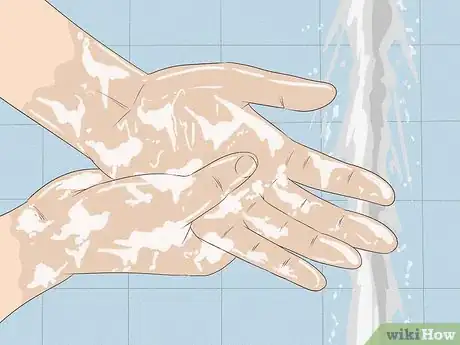

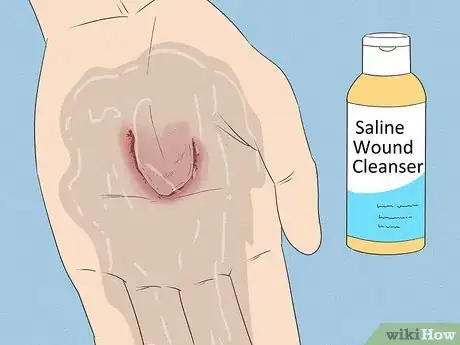
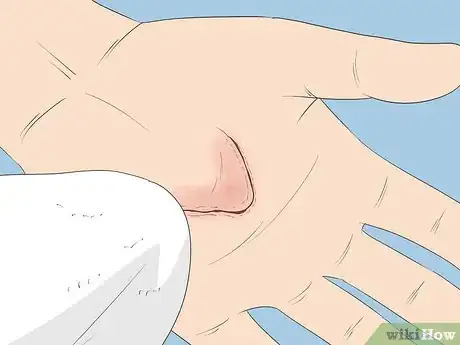
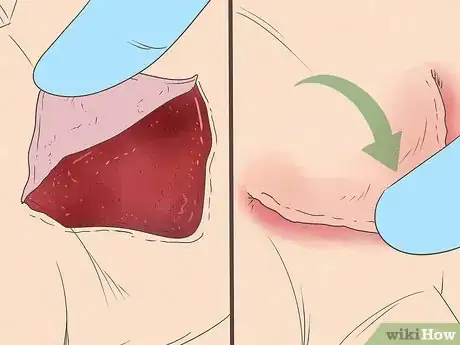
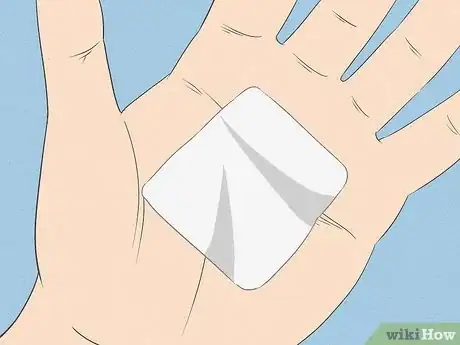
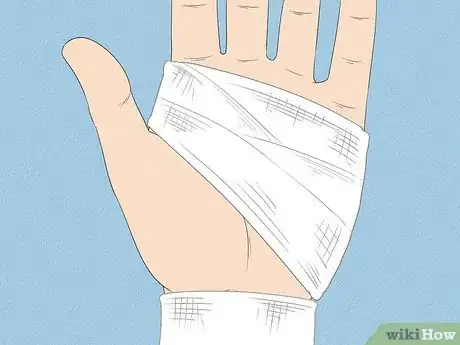
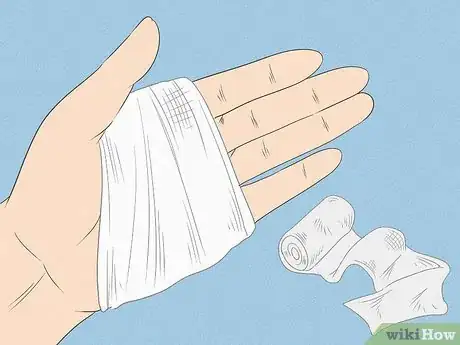
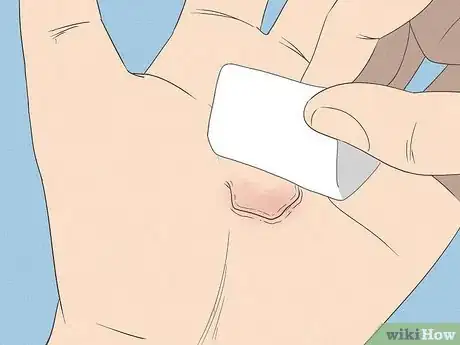
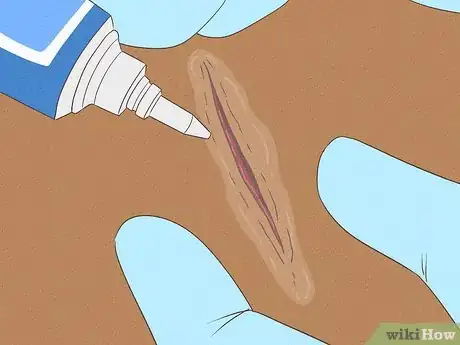
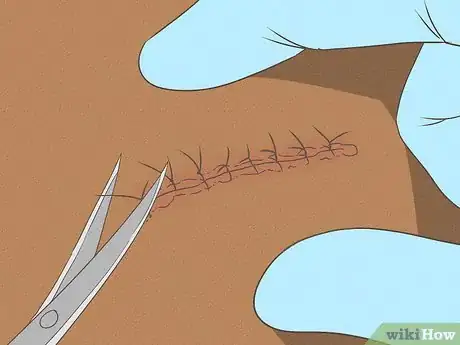
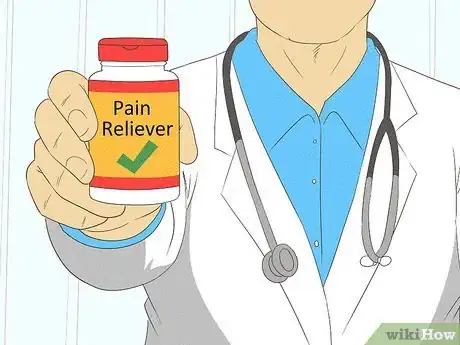
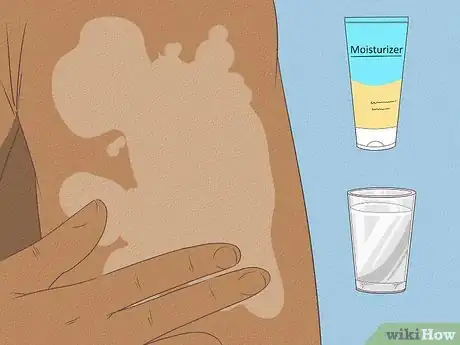
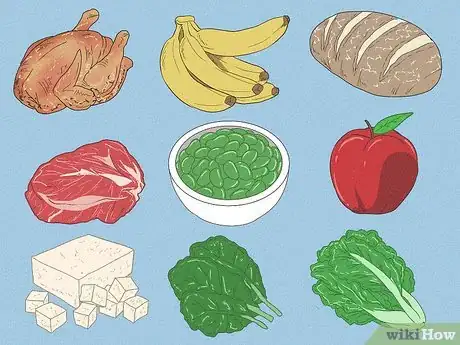
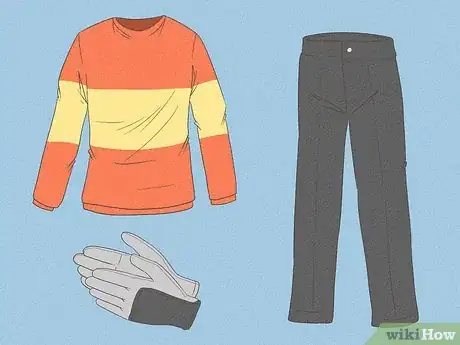



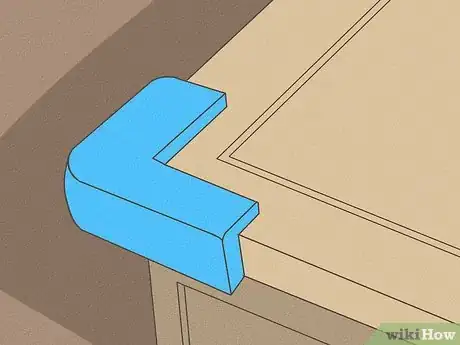
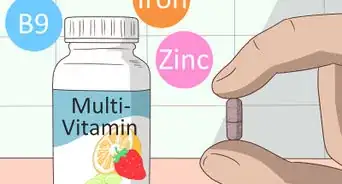
-Step-10-Version-2.webp)
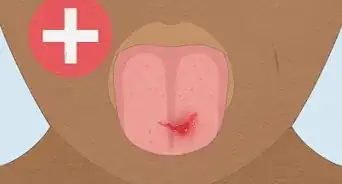

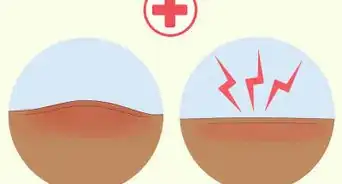
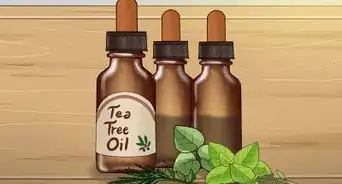
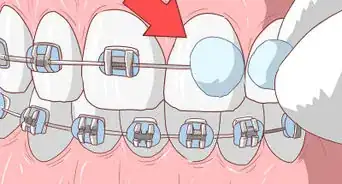
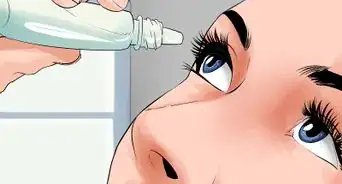

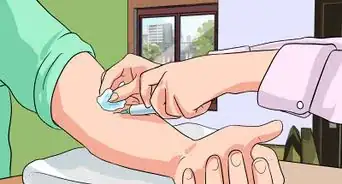










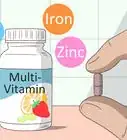
-Step-10-Version-2.webp)





































Medical Disclaimer
The content of this article is not intended to be a substitute for professional medical advice, examination, diagnosis, or treatment. You should always contact your doctor or other qualified healthcare professional before starting, changing, or stopping any kind of health treatment.
Read More...